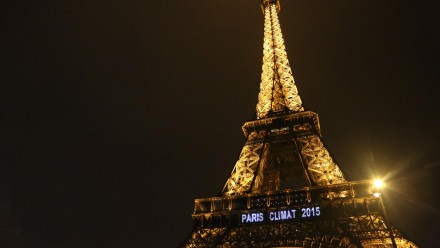US Proofing the Paris Climate Agreement
What does a Trump presidency mean for the Paris Climate Agreement? What can be done if a future US President withdraws or refuses to ratify the agreement?
These questions are explored in an article published in Climate Policy by Dr Luke Kemp. They are critical for an agreement which relies on universal participation for legitimacy. Such questions are particularly important given that the Paris Agreement was shaped to allow for US legal participation without consent from the troublesome US Senate. Due to the lack of binding commitments on emissions reductions and finances the US can (and likely will) participate in the Paris agreement via a presidential-executive agreement.
While Paris may allow for the US to join through the consent of Obama, it is a risky strategy. Since Paris relies on the agreement of the president, it could be easily reversed by a future president. A non-party US operating outside of the Paris climate architecture is a real threat, especially given Republican opposition to international climate policy. Republican nominee Donald Trump has declared that he will rewrite the Paris agreement ‘at a minimum’, or ‘cancel’ it. A future Republican president can and likely will (at least in the short-term) withdraw the US from the Paris Agreement.
Unfortunately, the Paris Agreement is vulnerable to the withdrawal of the US, or any other major party. It possesses no ‘non-party’ measures to either penalise countries outside of the agreement, or facilitative measures to encourage them to join. The rules of the agreement stipulate that market-based mechanisms can only be used by jurisdictions and bodies authorised by Parties. This would exclude progressive states such as California from engaging in international trading and cooperation under the agreement if the US were to withdraw.
In short the Paris agreement has no leverage or effective way to manage a non-party US.
The issue of non-parties is no minor one. The Kyoto Protocol was largely undermined by the inability of the US to ratify and the later withdrawal of Canada. The Paris Agreement relies largely on its legitimacy and symbolic ability to send a market and policy ‘signal’. Its legitimacy and the strength of such signals will be unravelled if the US chooses to drop-out, or refuses to join.
Amendments to the agreement would need to be made in order to make it US-proof, or resilient to any other future withdrawals. These could include revising the agreement to include a paragraph on ‘non-party’ measures. For example, the Montreal Protocol banned parties from trading in ozone-depleting substances with countries outside of the agreement.
A softer alternative could be to amend the agreement to allow for sub-national and private entities in non-parties to engage with carbon markets. This would allow the most progressive states in the US to join international markets and efforts. Such a move would help to save the legitimacy of Paris and show that despite presidential recalcitrance, climate action is still occurring within the US. Moreover, it could spur and facilitate further action within US borders.
While there are ways forward, amendments to the Paris Agreement are unlikely. The United Nations Framework Convention on Climate Change has never been amended. Attempts to re-open a treaty tend to be regarded as the diplomatic equivalent of opening Pandora’s box. Importantly, such amendments would need to be agreed to by consensus. In the case of a Trump presidency, this would mean that amendments would have to be agreed to and adopted at the next climate summit in November 2016.
The Paris Agreement will be fatally susceptible to a US dropout unless amendments to the treaty are made. Relying on the good will of a single president is short-sighted. Longer-term climate governance needs to take seriously the threat of non-parties, particularly if they are superpowers.
The full US-Proofing the Paris Climate Agreement article published in Climate Policy.











